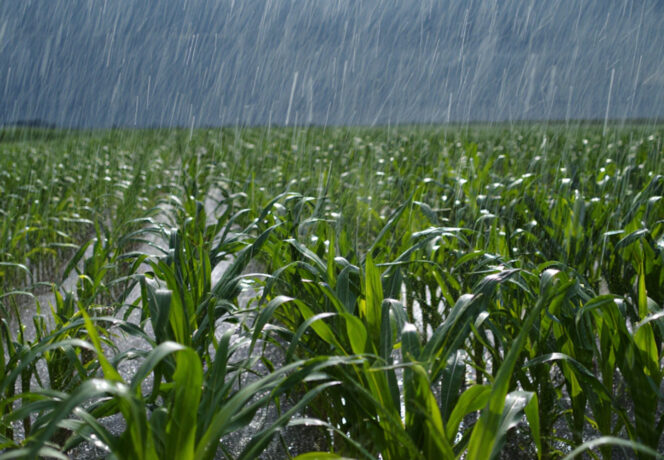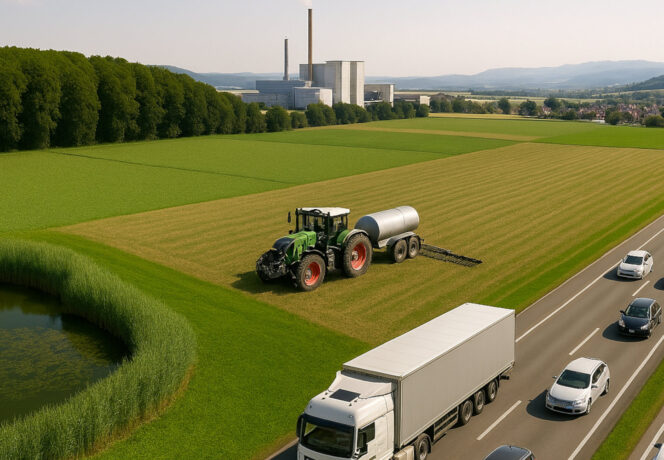Current Suisse-Bilanz Tool as an Environmental Indicator: Good for Phosphorus, Unsuitable for Nitrogen
Photo: Gabriela Brändle,
Agroscope
An Agroscope study shows that the Suisse-Bilanz nutrient-balance calculation tool could serve as an environmental indicator for sustainable nutrient use – but only for phosphorus, not for nitrogen.
Sufficient availability of nutrients is crucial for optimal yields and high-quality plant products for human and animal nurition. Excess nutrients, particularly excess nitrogen (N) and phosphorus (P), pollute the environment and have been a key topic of agricultural and environmental policy in Switzerland and Europe for decades. In this area of conflicting priorities, it is important to strike an ideal balance between supplying crops with sufficient nutrients and minimising environmental impacts, i.e. using nutrients sustainably.
The aim of this study was to determine whether Suisse-Bilanz is suitable as an environmental indicator for sustainable nutrient use. Suisse-Bilanz is a supply-demand balance sheet that Swiss farms are obliged to draw up as part of the Proof of Ecological Performance (PEP) in order to receive direct payments. The Suisse-Bilanz results were compared with those of a soil-surface balance (the OECD balance) which is drawn up for farm and national agri-environmental monitoring. The data for the comparison stem from the Swiss Agri-Environmental Data Network (SAEDN) which collected data annually from around 300 farms from 2009 to 2022.
Deductions for nitrogen losses distort the result
The analysis showed that the nitrogen balances produced by Suisse-Bilanz and by the soil-surface nutrient-balance calculation tool correlate only weakly. Whereas the N balances of the soil-surface tool were mostly positive (between 58 and 83 kg total N per ha), they were slightly negative in Suisse-Bilanz (between −14 and −2 kg available N per ha). This is because nitrogen losses arising e.g. from animal housing or grazing, or from the storage and spreading of farmyard manures, can be deducted in Suisse-Bilanz, whilst these losses are not taken into account in the soil-surface tool, but are recorded as part of the balance. Unlike the Suisse Bilanz, the soil-surface balance does not show the plant-available nitrogen. This is why farms with large amounts of organic fertiliser or large herds have significantly higher values in the soil-surface balance than in Suisse-Bilanz.
Strong correlation of both balances for phosphorus
By contrast, the Suisse-Bilanz and soil-surface balance values were found to correlate well for phosphorus. Whereas the P soil-surface balances were balanced (between −2 and 0 kg P per ha), those of the Suisse-Bilanz balances exhibited only a slightly negative tendency (between −3 and −1 kg P per ha). The reason for this better correlation is that P is less volatile than nitrogen, so no deductions need be made for the P in farmyard manure.
The study shows that in its current form, the Suisse-Bilanz tool is not suitable for reliably quantifying N losses. The flat-rate deductions at animal housing-, storage- and spreading scales and the simplified calculation of the plant-availability of N for organic fertilisers prevent a specific representation of the actual N losses. The soil-surface balance offers a better basis for evaluating nitrogen surpluses. By explicitly taking account of the deductions in addition to the current balance, a surface-balance calculation tool balance can also be generated that ensures a more accurate estimate of the losses and is therefore more suitable as an environmental indicator.
Wanted: data for agri-environmental monitoring
Suisse-Bilanz is, however, a useful environmental indicator for phosphorus, since it is closely correlated with the soil-surface balance calculation tool. Additional consideration of the mandatory soil analyses recurring as part of PEP can further improve the calculation of regional phosphorus surpluses and the consequential risks of loss. Currently, however, neither the Suisse-Bilanz balances of the farm nor the farm-scale soil analyses are available to the Agroscope agri-environmental monitoring programme.
Conclusions
- Suisse-Bilanz and soil-surface balances of farms from the Swiss Agri-Environmental Data Network (SAEDN) were compared to test whether Suisse-Bilanz is suitable as an environmental indicator for sustainable nutrient use.
- The results of both balances were only weakly correlated for nitrogen, since flat-rate deductions for unavoidable nitrogen losses and the plant-availability of the organic nitrogen reduced the values for Suisse-Bilanz.
- The soil-surface balance methodology offers a better basis for evaluating nitrogen surpluses.
- The correlation between both balances for phosphorus is strong. Consequently, Suisse-Bilanz is a useful environmental indicator for phosphorus, although it could be improved through the inclusion of the soil information.
Bibliographical reference
Nährstoffbilanzvergleich: Betriebsbilanzierung von Stickstoff und Phosphor anhand zweier unterschiedlicher Methoden: Suisse-Bilanz und Bodenoberflächenbilanz.



